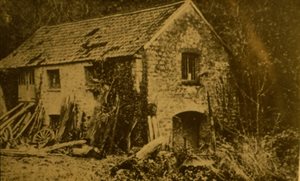
2016: Lottery Funding for Porthkerry 'Wood to Wheel' Project
Porthkerry Country Park has been awarded £63,000 by the Heritage Lottery Fund for an exciting project, Wood to Wheel – the story of a mill.
Led by the ranger service, and involving the local community, the project will focus on the ruins of Cwm Ciddy Saw mill and the surrounding woodlands of Millwood. The money awarded will be used to stabilise sections of the Old Saw Mill in the Millwood area of the Porthkerry Country Park so that it can be opened up to visitors, including local schools.
A new footpath will be constructed, the existing steps to the pool repaired, and a new walking route established along the leat. The project aims to also illustrate that a living tree can be converted into something useful and that this can be accomplished sustainably, without damaging the environment.
Once completed the ranger team will hold a variety of activities in the renovated mill including chainsaw and traditional felling methods, shire horses demonstrations, willow weaving, and wood turning. Ten schools have already signed up to take part and two event days are planned.
The team at Porthkerry are now appealing to anyone who remembers the mill when it was in use either as a saw mill, or as a scout hut, or who have any old photos of the site.